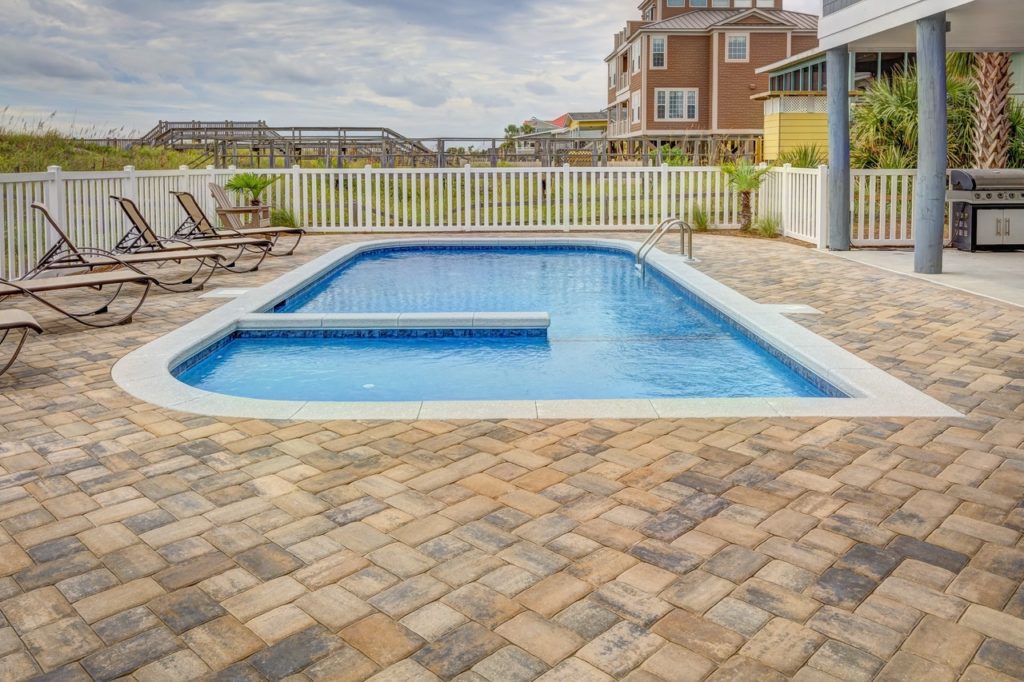Installing a backyard swimming pool is certainly an exciting time. It’s likely something you’ve been dreaming about and planning to do for quite some time. An in-ground swimming pool is an investment in your home and it’s a fairly major project to undertake.
Earth moving and excavation will first need to take place before the actual pool can be constructed, completed, filled with water and ready for use. The backyard needs to be fully prepared and ready for swimming pool construction.

In this article, we’ll be taking a look at some things to consider when excavating the space for your swimming pool.
1 – Are There Any Underground Pipes Or Cables In the Area?
One thing that you’ll want to ascertain before any excavation work commences is whether there are any existing pipes buried under the ground in the area where you plan to dig your pool. A check of the house and lot plans should reveal this. If this isn’t possible, then you’ll want to call in an expert who is armed with ground penetrating radar (GPR) to check for underground obstacles such as pipes or buried cables.
You don’t want to start digging holes, only to smash your way through pipes or something else of importance.
2 – Make Sure the Hole Is Big Enough
This may sound like an obvious suggestion, given that you’ll have plans drawn up that specify the exact dimensions of the pool. However, you don’t want to excavate a hole that’s designed to be an exact fit, or you may find the concrete shell of the pool won’t fit when it arrives.
To be on the safe side, dig an extra metre in length, width and depth. The gaps can be back-filled once the shell is in place. This is easier than trying to excavate more earth at the time. Just dig the hole a little larger than necessary and save yourself any headaches.
3 – Is Any Soil Stabilisation Required?
When you hire a company to build your swimming pool, for the most part, you’ll be able to rely on them for advice and expert guidance throughout the course of the project. One thing that will need to be taken into account is soil stabilisation.
It may not be necessary, but if the pool is to be placed very close to the house, another structure or even a fence, the soil may need to be stabilised in order to maintain the structural integrity of the nearby structure, whatever it may be.
This is an important consideration and not something you want to overlook if other structures are situated close by.
4 – What Earth Moving Equipment Is Required?
When everything is planned and ready to go, it’ll be time to bring in the earth moving equipment to excavate the hole for the shell of the pool.
Depending on the size of the pool, you might be required to hire a mining excavator. These heavy-duty machines make short work of hole digging and if your pool is on the larger size, the task will be completed in short time with a mining excavator.
For smaller swimming pools, or in situations where access to the area is limited, mini excavators are the earth moving tool of choice. These machines will take a little longer to get the job done, but they are perfect in areas of confined space and will still get the hole dug in relatively quick time.
5 – Safety Around the Excavation Site Is a Must
Now that the hole for the backyard swimming pool is being dug or has been excavated, there will be safety concerns before the pool is actually completed. If you have small children or pets, you’ll want to keep them well away from the hole so an accident doesn’t occur.
At night, have the area well lit so if anyone is outside after dark, they don’t accidentally stumble into the hole and hurt themselves.
Temporary fencing would also be worth considering.
In Conclusion
If you plan ahead and take into account the above points, your swimming pool construction should get completed without a hitch and you’ll be enjoying your backyard swimming pool in no time.

